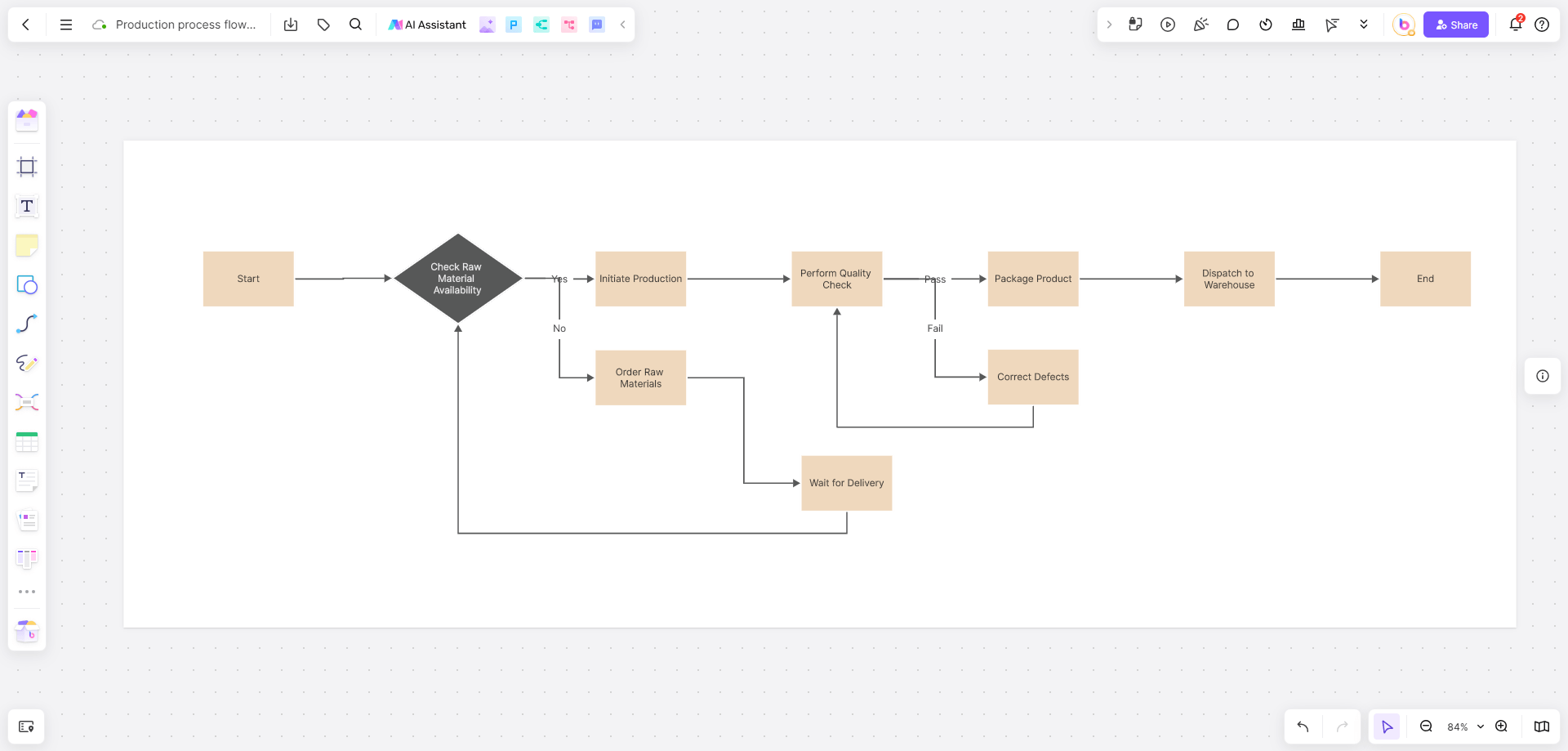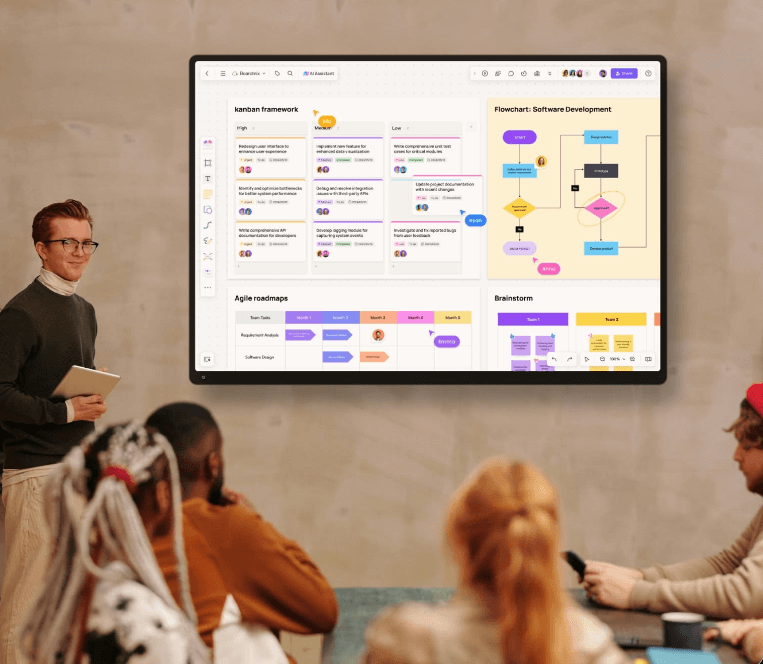Storyboard and comic strip are both excellent ways of expressing stories through frames, pictures and text. However, the former one is a sophisticated blueprint produced by industry, while the other one is a finished art product for readers. Is a storyboard similar to a comic strip? And what are the essential differences between a storyboard and a comic strip? This article will compare them in details. Let's get started!
What is a storyboard?
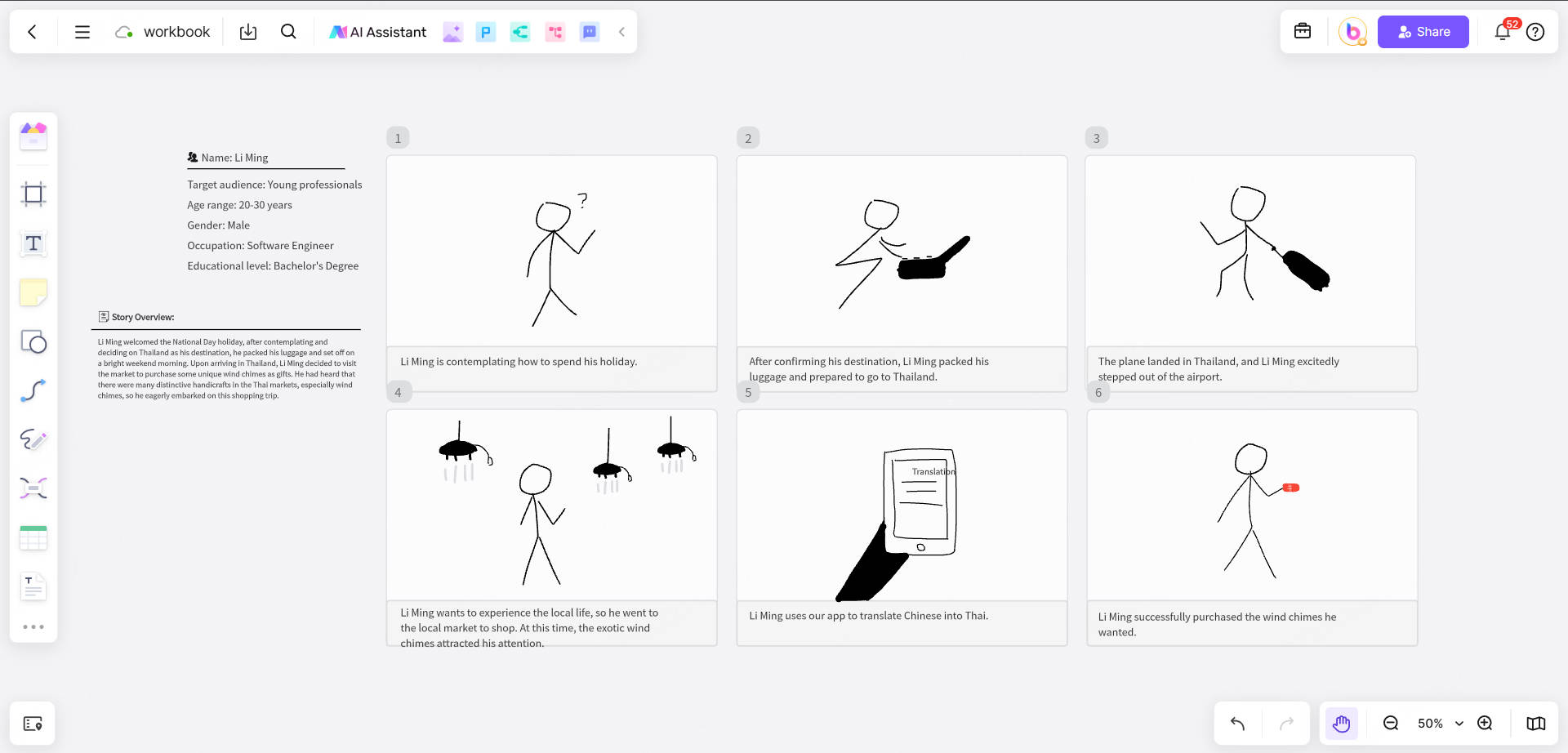
Storyboard is actually a creative tool that turns a script into a comic strip, just like drawing a design before building a house. Whether it is a movie, animation or commercial, this "storyboard script" will be made in advance - not only will the scene be sketched, but also the camera will be clearly marked how to move, how the actors will move, and even the seconds and minutes of each shot will be clearly written.
Why is the storyboard a universal manual for the set?
📌 Storyboard is a visual translator
Turn the boring script text into pictures, so that the director, photographer, and special effects team can understand what to shoot in seconds. The director of "Star Wars" relied on storyboards to plan the spaceship movement and laser special effects of the space war in advance.
📌 Storyboard is a shooting GPS navigation
Mark whether the camera should be pushed in or out, and whether the transition should be faded or hard cut. When Pixar filmed "Coco", it first used dynamic storyboards to preview the scenes of the world of the dead, saving 40% of post-production costs.
📌 Storyboards are a great way to save money
When Nolan was filming Inception, he found through storyboards that there was a dream layer that was completely unnecessary, so he cut $2 million from the budget. This is like looking at 3D renderings before decorating to avoid the waste of tearing down and redoing.
📌 Storyboards are a creative experiment
Before Akira Kurosawa filmed the heavy rain showdown in Seven Samurai, he changed 37 storyboards before finding the best composition. Just like playing games with unlimited saves and restarts, storyboards allow masters to toss around with their creativity without fear of failure.
The next time you watch a movie, if you pay attention to the end credits, you will find that those storyboard designers are the heroes behind the scenes who make the wild imagination come true!
What is Comic Strip?
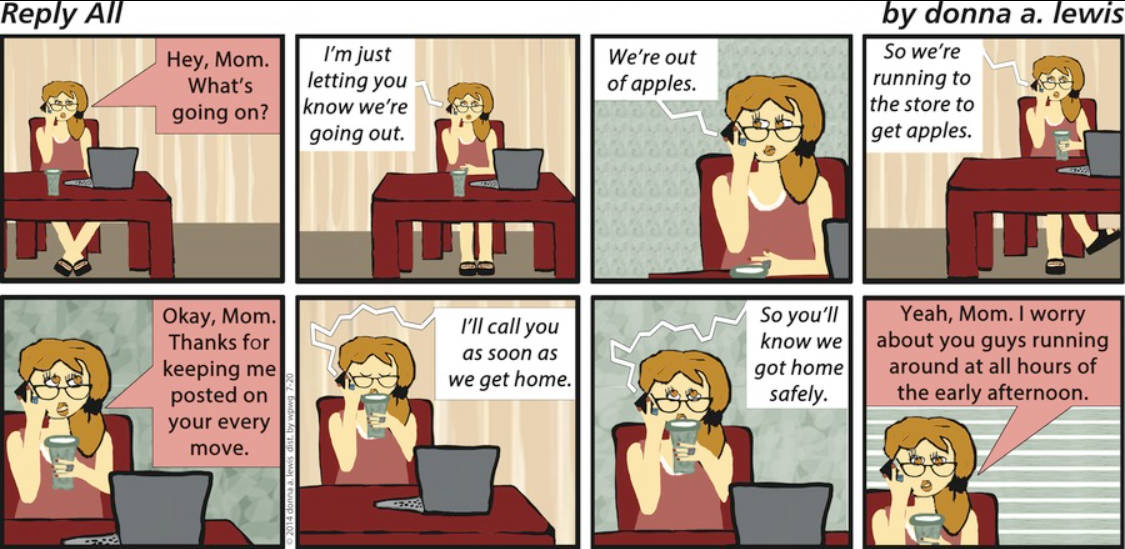
Source: wordpress.com
Simply put, Comic Strip is a classic comic strip, which tells a complete story in 3-4 small panels, just like watching short videos. The "Garfield" and "Snoopy" you see in the corners of newspapers and on social media are short and fast comics, which are easy to understand and updated frequently.
The comic strip has the following features:
First, the comic strip has a simple structure
It usually consists of 3-4 panels to form a complete narrative loop. For example, "Peanuts" often uses 4 panels to complete the beginning, development, transition and ending.
Due to the layout limitations of early newspapers, two classic formats were born: the standard 3-column format (daily serialization) and the full Sunday Strip.
Second, the comic strip is full of narrative efficiency
Relies on visual shorthand: using symbolic elements (such as sweat drops to indicate tension and light bulb icons to represent a flash of inspiration) to quickly convey information.
The lines are highly condensed, and a single panel of dialogue in "Garfield" often does not exceed 15 words.
Last, the comic strip has serialized attributes
Through long-term character building, Charles Schulz created Snoopy for 50 years, and the character's personality evolved with the times.
The balance between daily serialization and long-term narrative, such as Calvin and Hobbes, contains both independent jokes and hidden philosophical main lines.
Is a Storyboard Similar to a Comic Strip?
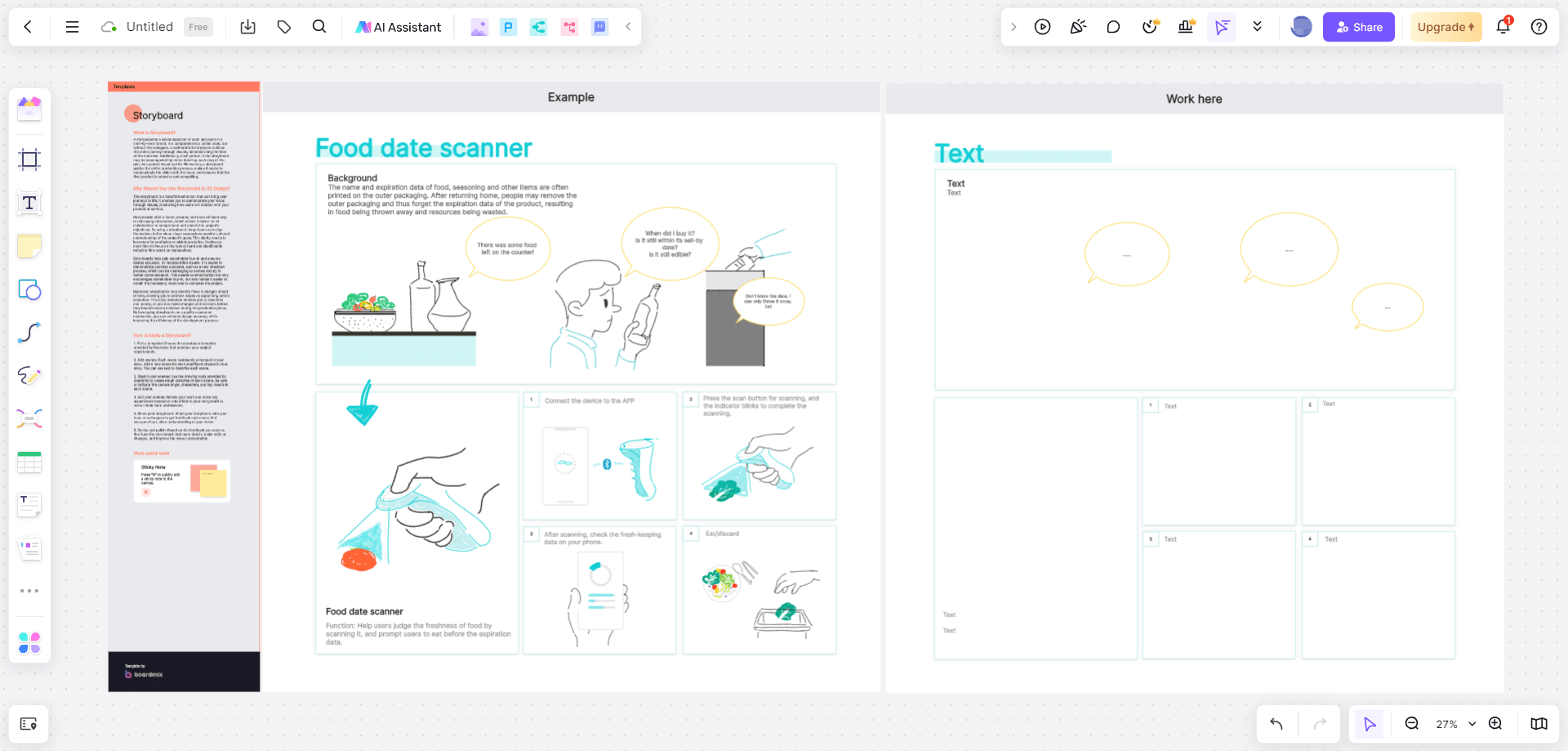
Acturally, there are some similaritis and also some difference between storyboard and comic strip. Storyboard and comic strip have similar panel structures in visual form, but there are essential differences in core functions, creation logic and application scenarios. Below we will compare storyboard and comic Strip.
Similarities between Storyboard and Comic Strip:
First, storyboard and comic strip both advance the story through panel narrative
Both advance the narrative through panel arrangement, using dialog boxes, onomatopoeia and other graphic elements. For example, the comic panels of The Adventures of Tintin and the storyboards of Star Wars both follow a reading order from left to right.
Second, storyboard and comic strip are both a set of visual symbol systems
They both rely on common visual symbols to quickly convey information, such as: speed lines to express dynamics (Garfield chase scene vs. dinosaur running annotations in Jurassic Park storyboards), and sweat drop symbols to express tension (comic characters vs. actor emotional annotations in storyboards)
Storyboard Similar vs Comic Strip: Core Features Comparison
| Dimension | Storyboard | Comic Strip |
| Core Purpose | Industrial blueprint for film production | End-product cultural material for readers |
| Narrative Logic | Serves camera movement and time flow (e.g., “5-sec tracking shot”) | Relies on panel transitions to create psychological time flow |
| Creation Precision | Allows rough sketches and symbolic elements (e.g., arrows indicating camera movement) | Requires high completion level with consistent artistic style |
| Iteration Frequency | Frequently revised (Marvel often iterates a single scene's storyboard 20+ times) | Cannot be altered after publication |
| Technical Annotations | Includes camera parameters (e.g., focal length, movement) and VFX trigger points | No technical details, focuses on character expressions and storytelling |
| Time & Space Representation | Follows a strict linear timeline (aligned with editing logic) | Manipulates perception of time and space through panel size/shape (e.g., flashbacks) |
| Core Audience | Directors, cinematographers, VFX teams | General readers |
Storyboard Similar vs Comic Strip: Typical Scenes Comparison
Case 1: Performance of action scenes
The storyboard of "Jason Bourne":
The shaking amplitude of the handheld camera is marked with a red arrow, "0.8 second fast zoom" is marked to achieve a sense of dizziness, and an additional note "CG blood synthesis space needs to be reserved here".
The comic strip of "Batman":
The tension is created by tilting the frame frame, and the pupil contraction of the character is shown with a close-up frame, relying on the reader to imagine the coherent fighting action.
Case 2: Humorous expression
Pixar animation storyboard:
In the grid where the character falls, "Physics engine parameters: collision volume is reduced by 30% to enhance the comedy effect" is marked.
The comic strip of "Snoopy":
Through Charlie Brown's kite that never flies away and the three-frame repeated composition, absurd loop laughs are constructed.
What are the Misunderstandings of Storyboards and Comic Strips?
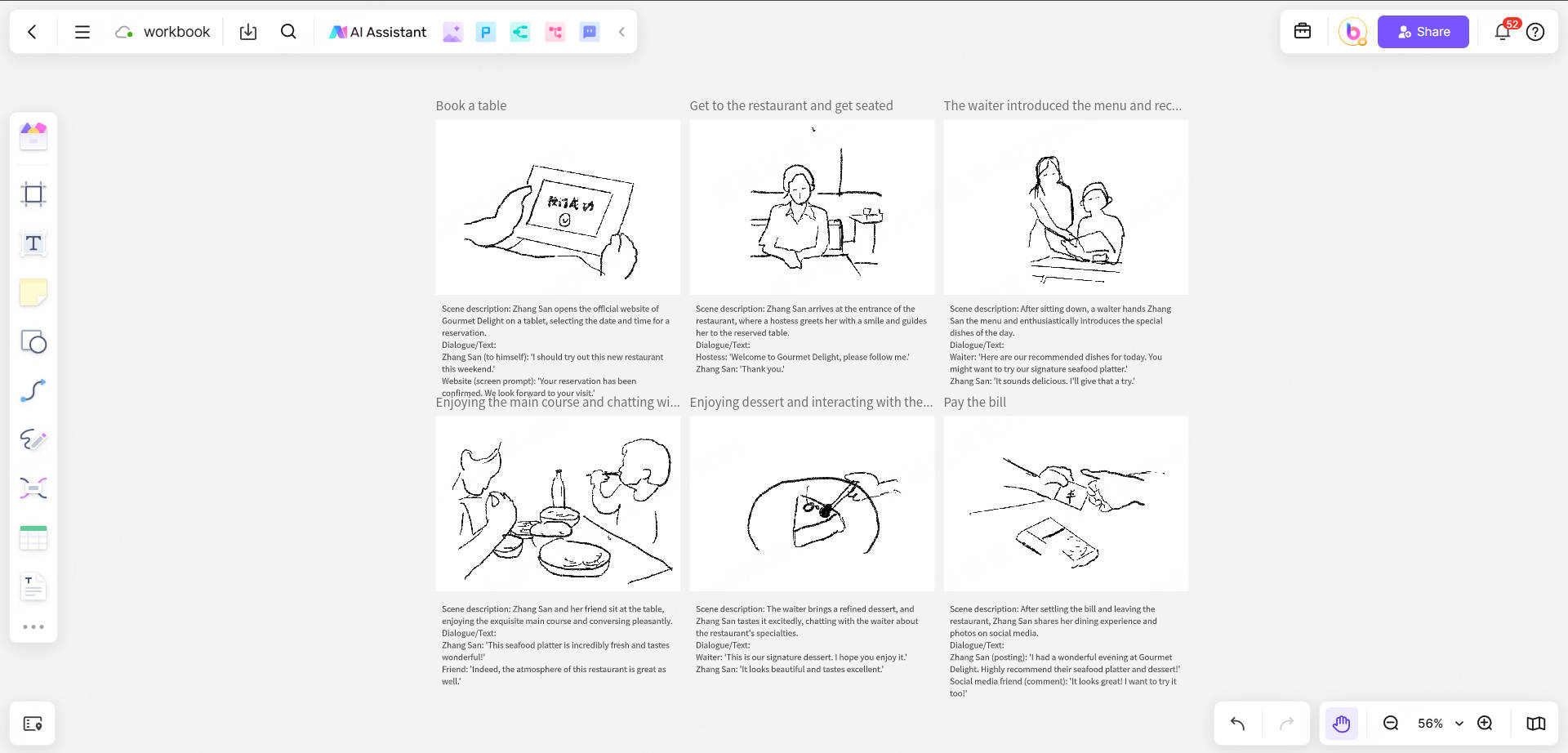
"Storyboards are unfinished comics"
Error: The simple drawings of storyboards are for rapid iteration, and the value of their technical annotations far exceeds the accuracy of the picture itself. For example, the storyboard of "Avatar" uses scribbled lines + precise annotations to guide 3D modeling, which has nothing to do with the aesthetic completion of the comics.
"Comic storyboards can be directly converted into storyboards"
Risk point: The cross-page composition of comics (such as the panoramic storyboard of "Attack on Titan") needs to be deconstructed into multiple shots when it is adapted into a film or TV series. Direct appropriation will cause confusion in the axis. When Mamoru Oshii adapted "Ghost in the Shell", he disassembled a philosophical cross-page of Shirow Masamune's comics into 7 motion shots + 3 sets of special effects layers.
Conclusion
Storyboards are dynamic preview tools driven by engineering thinking, while comic strips are static narrative products driven by artistic thinking. The two are like architectural blueprints and illustrated postcards—both use lines and colors, but the former is born for construction, while the latter exists for empathy.
As an online whiteboard that integrates real-time collaboration, visual storytelling, and professional drawing, Boardmix has become a team creative center with its flexible canvas and rich functions. For example, members can provide real-time feedback on revisions to avoid the version confusion of traditional paper storyboards. Or, in comic strip design, you can quickly add emoticon stickers to build an efficient narrative. Now, just log in to Boardmix and start creating your story online!





